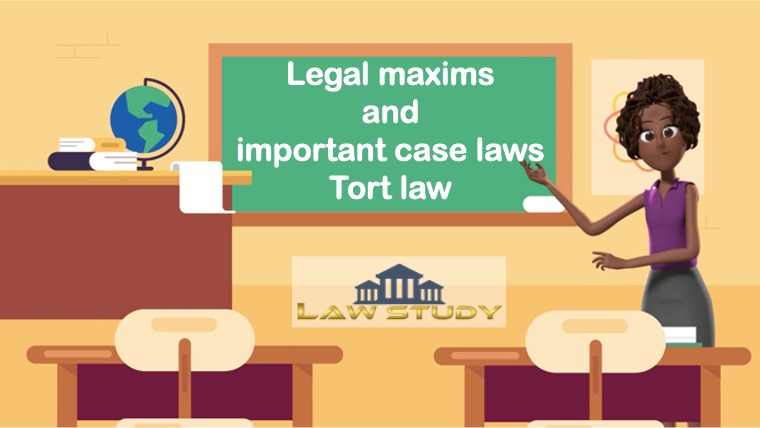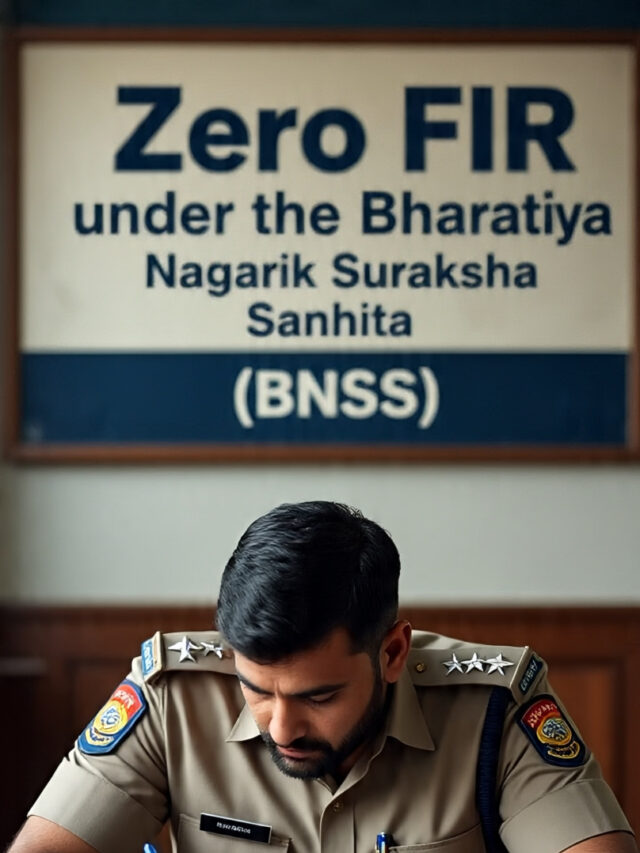Introduction of the Legal maxims and important case laws: Legal maxims are short and to-the-point statements that are frequently used in the legal system as a fundamental aspect or principle that must be followed by society. To avoid a lengthy definition, legal maxims must be used.
There are a few legal maxims that are generally used in the law of torts and have come to light as a result of cases. The fact that the victim or plaintiff has suffered legitimate harm has been the most significant element in tort.
As per Salmond, “Tort law is a wrongful act whereby the remedy is in a common-law action for unliquidated damages and which is not solely the breach of the contract, the breach of trust, or other simply equal and fair obligation”.
There are a few key maxims that have emerged as a result of Tort Law

Damnum sine Injuria
Damaging a person without Injuring them,’ where damage refers to monetary loss. Comfort, assistance, & health, among other things, are all important factors to consider. An infringement of basic legal rights is referred to as injury.
To put it another way, actually hurting someone without violating their legal rights. Many acts appear to be injurious in nature but are not regarded as wrongful in law, and they’re not actionable and provide no relief to the victim.
Also, if an individual is exercising his or her legal rights under the law and in doing so causes harm to other people, the individual would not be taken into account as a wrongdoer.
In the case of Gloucester Grammar school
Fact: The respondent/defendant was a high school principal who opened a new high school near the plaintiff’s school (Gloucester Grammar School). A huge number of students transferred to the new high school, causing the plaintiff to lose money. As a consequence, the plaintiff decided to sue the defendant.
The question in this case is whether the respondent/defendant should be held liable for the plaintiff’s loss. Is the case comprehensive enough to cover all aspects of the Damnum Sine Injuria?
according to the judgement. The defendant cannot be sued because the plaintiff’s basic rights were not violated, he hardly suffered an economic loss, and the defendant had accordance with the law opened the school.
Injuria sine Damnum
Injuring a person without actually causing physical harm,’ where damage relates to an infringement of legal rights. In other words, a violation of a person’s basic legal rights without even any real harm to the individual’s wealth, health, or comfort.
In many cases, an individual suffering a legitimate injury as a result of another person’s actions; in these cases, the plaintiff doesn’t want to prove the physical damage he sustained; instead, he must prove the lawful injury he sustained. Whenever a legal right is breached, an individual whose legal right has been infringed has the right to file a lawsuit against the individual who caused the damage, even if the individual really hasn’t experienced severe real harm. This is actionable in the legal system, and the victim will receive compensation.
Ashby v/s white, 1703
Fact: When the plaintiff, Ashby, an ordinary person with a right to vote, went to exercise his right to vote, he was rejected by the defendant, despite the fact that the candidate for whom he wanted to vote had won the general election. The plaintiff, Ashby, filed a lawsuit against the defendant, alleging that his legal rights had been violated.
The question in this situation is whether the applicant/plaintiff is empowered to seek restitution if one of his civil human rights is violated by the acts of someone else.
The court has ruled that the right to vote is a fundamental right and that any impediment to exercising that right will result in action and remedy to the victim.
Ubi jus ibi remedium
The term jus refers to the legal body or authority, and the term remedium refers to a person’s right to sue in court. The progress of the maxim is said to be tort law. The significance of this maxim is that ‘where there is a wrong, there is a redress/remedy,’ and it is one of the necessities of the law of torts. If any damage has been perpetrated or a person’s right has been infringed, the court would provide a redress/remedy, as per this legal maxim. As a result, no damage must be permitted to go unpunished.
These maxims are only appropriate when a legal right exists, and there must be a wrong action having caused injury to another person in all circumstances, as that wouldn’t be applicable if there was no injury to an individual.
Bhim Singh v. State of Jammu & Kashmir
Fact: Bhim Singh, a member of the Jammu & Kashmir parliamentary assembly, was unlawfully detained by a police officer and was restrained from attending the session, as well as not being presented before a magistrate on time. There was a casting votes session, and his vote was extremely important, he was unable to cast a ballot, but the participant for whom he genuinely wished to cast a ballot won, so he filed a suit to prevent him from exercising his rights. He filed suit against the S.C. under Article 32 after he was dissatisfied with the apex court’s decision.
The question that has been raised is whether monetary compensation is appropriate. Is Bhim Singh’s detention legal or illegal?
Bhim Singh was illegally detained, according to the court, and he was deprived of his right to freedom of movement under Article 21, which allows citizens to go where they want without even being subjected to unlawful retraining. As a result, the apex court awarded him RS.50,000 in damages.
Ex turpi causa non oritur action
This maxim means that “No action can result from an Unlawful Act.”
In some cases, the plaintiff is involved directly in the unlawful activity; as a result, the plaintiff would be unable to pursue legal action against some other party and will not get any legal remedy. As the plaintiff is also engaged in the unlawful activity, this may be used as a defence by the defendant to explicitly exclude himself from obligation. This legal maxim is used in the form of defence not only in the law of torts but also in estate, contract, trust, and restoration.
Holman V Johnson (1775)
Fact: The plaintiff was aware of the defendant’s act to smuggle the tea to England without reimbursing the legal obligation, and he sold and delivered the tea to him knowing all of the facts. The Defendant failed to pay for the tea, so the Claimant filed a lawsuit to recover the cost of the tea.
The issue at hand is that the seller was knowledgeable of the buyers’ illegal intentions in this case. So, the seller be able to pay back the value of a product or not?
The plaintiff’s interest in the contract was accomplished by the supply of goods, according to the court, there was nothing else for the plaintiff to do. The plaintiff was said to be innocent of any crime.
Res ipsa loquitor
This is among the most important legal maxims in deciding a case’s judgement; the interpretation of this legal maxim is that ‘things speak for themselves.’ The Res ipsa loquitor is often used in cases of infringement, where the parts of evidence in a case are still not appropriately mentioned however the facts are sufficient to prove the defendant’s negligence. This is one form of evidence that permits a rational fact finder to decide that another person caused an extraordinary occurrence that resulted in the plaintiff’s injury and that the defendant was guilty of negligence on his part
Key Essential Elements:
The existence of negligence: when someone acts negligently, accidents happen. However, there are a few cases where the plaintiff must prove negligence.
The defendant is solely responsible: for example, if a doctor leaves a cotton swab inside the patient’s body during surgery, the plaintiff does not need to prove that the physician was negligent.
The defendant owes the duty of reasonable care towards the plaintiff.
Actio personalis moritur cum persona
“A person’s personal right of action dies with him or her,” or, to put it another way, a person’s rights die with him or her when he or she dies. The cases cannot be passed on to another person, and the case’s credibility ended with the person’s death. The first case, in which a woman died prior to actually paying the charges she was obliged to pay for defaming someone, was brought to light in 1496, and this maxim has been applied ever since.
Nurani Jamal & Ors. vs Naram Srinivasa Rao & Ors.
In this case, Jaheen Jamal filed a lawsuit against the respondent for an injury he suffered in a car accident. The plaintiff is brutally murdered in another car accident while the case is pending. The deceased’s representative filed a petition, but it was dismissed by the apex Court.
The issue of this case is whether the legal representative can bring the acts if the dead person is no longer alive or has passed away.
The court stated that an action for lawful harm sustained by a person who suffers will die with him, but that the above maxim does not apply in the case of damage or loss to a person’s property.

























